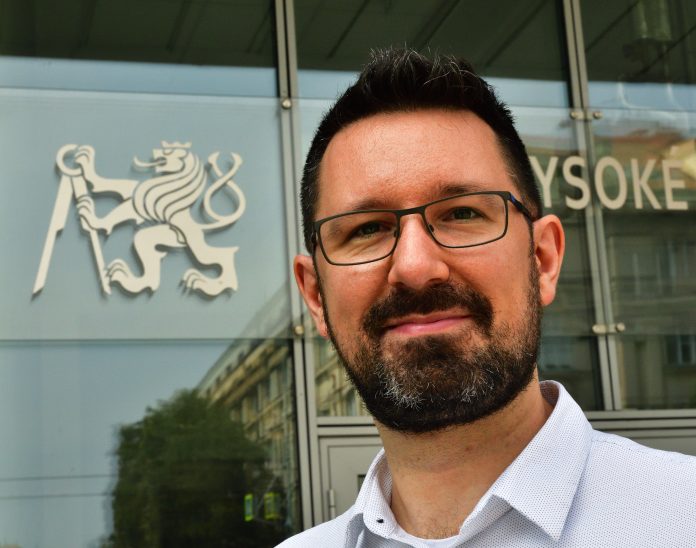Another scientist has come to the Czech Republic thanks to the newly emerging RICAIP Centre to enhance research at the Czech Technical University. Since July 2020, computer vision expert Torsten Sattler has been a member of the Czech Institute of Informatics, Robotics and Cybernetics at the Czech Technical University in Prague (CIIRC CTU). This German researcher, moving from Sweden, decided to combine his next career with Czech science and strengthen the field of artificial intelligence (AI) and robotics for advanced industry.
Until this summer, Dr. Torsten Sattler worked at the Chalmers Technical University in Gothenburg, Sweden. His main research interest is 3D computer vision, with a special focus on 3D reconstruction and visual localization. His expectation at CIIRC CTU is to build a group of five people working on machine learning and 3D Computer Vision.
“It turns out that CIIRC CTU is an attractive workplace for renowned experts from Europe and around the world. The research excellence, which we have been striving for since beginning, would not have been possible without openness, cooperation and world-wide network,“ notes Prof. Vladimír Mařík, Scientific Director at CIIRC CTU and the coordinator of the RICAIP Project (Research and Innovation Centre on Advanced Industrial Production), and adds: “Dr. Sattler fully meets all these aspects and I am very pleased that, after a demanding selection process, he is taking up one of the new so-called tenure track job positions that we were able to create at CIIRC CTU thanks to the establishing of the RICAIP centre.“
“My work has direct applications in robotics. RICAIP at CIIRC CTU offers me the possibility to work with great robotics researchers and thus to explore the interconnections of computer vision, robotics, augmented reality, and AI in more detail. I am planning to work on advanced localization and 3D reconstruction algorithms that work robustly and reliably on a wider range of scenes while modelling the fact that the real world is dynamic,” Dr. Torsten Sattler explains.
“Thanks to the state-of-the-art infrastructure that has been acquired at the RICAIP centre, which is currently one of the largest recent EU projects in the field of AI and Industry 4.0, Dr. Sattler will have a great chance to be exposed to industrial use cases,” Dr. Tilman Becker, Director of the RICAIP Centre, points out and continues: “RICAIP gives the researchers the opportunity to identify open problems in related areas and focus on scientific directions that provide outlook on applicable results.”
Over the last years, Torsten Sattler visited Prague many times and developed a long-standing cooperation with research teams at CIIRC CTU, namely with the groups led by Josef Šivic and Tomáš Pajdla. “To me, Prague is attractive for multiple reasons. It has a very strong Computer Vision community and I would argue that CTU and CIIRC has one of the strongest groups of Computer Vision researchers in Europe. These people together with the institutional background provided by CIIRC CTU are able to attract top students and offer the possibility to do world-class research. Last but not least, the city is nice to live in, offering a comfortable and safe environment that is well-connected to other countries,” Torsten Sattler sums up his reasons for the decision.
3D reconstruction techniques build 3D models of a scene from images taken by cameras and depth sensors, whereas visual localization algorithms use these 3D models to determine where in a scene new images were taken. 3D reconstruction and visual localization are key enabling technologies for any type of intelligent system that needs to operate in the real world and share a space with humans, such as autonomous robots – self-driving cars, drones, or transport vehicles – and Augmented and Mixed Reality systems. There has been significant progress in research, as we can see, for example, in the development of hololens for virtual and augmented reality. However, 3D reconstruction and localization algorithms are still brittle and easily fail in more complex environments such as in industrial settings. In addition, they often assume that scenes are static, which is definitively not the case for the real world.
Before working in Sweden, Torsten Sattler contributed to this field at the Institute of Visual Computing at one of the world’s leading universities in the field of technology and natural sciences, ETH Zurich, Switzerland. He graduated in computer science and also got his doctoral degree at RWTH Aachen, the largest university of technology in Germany and one of the most renowned in Europe.



